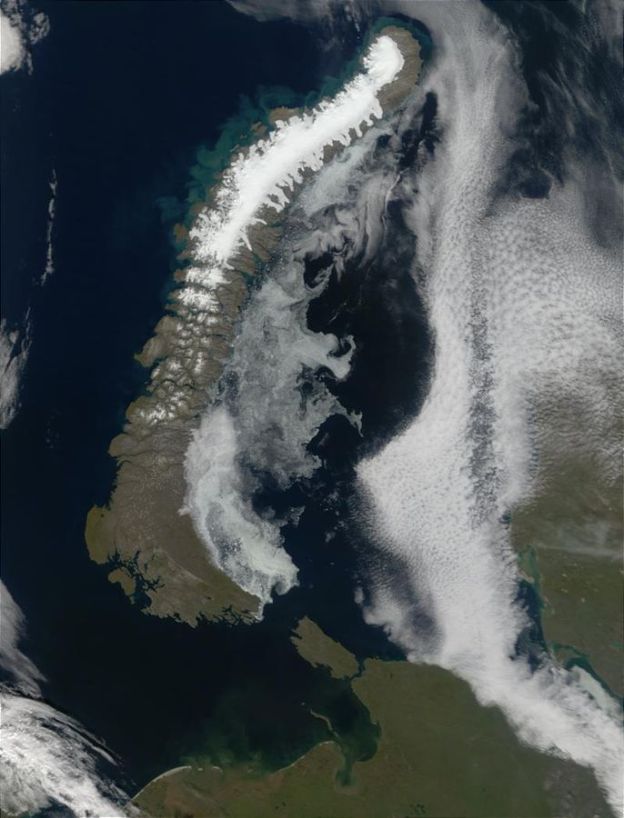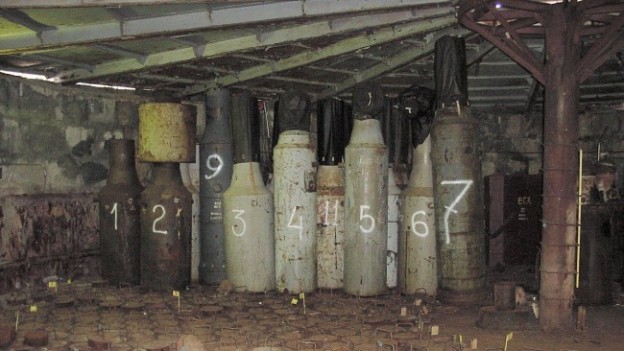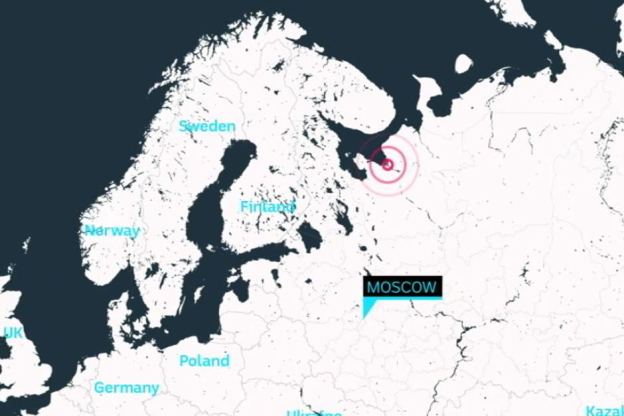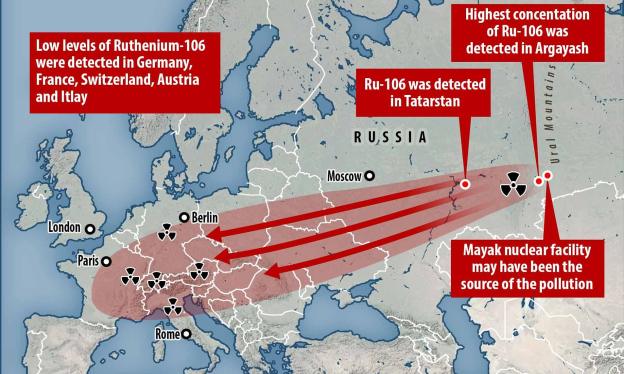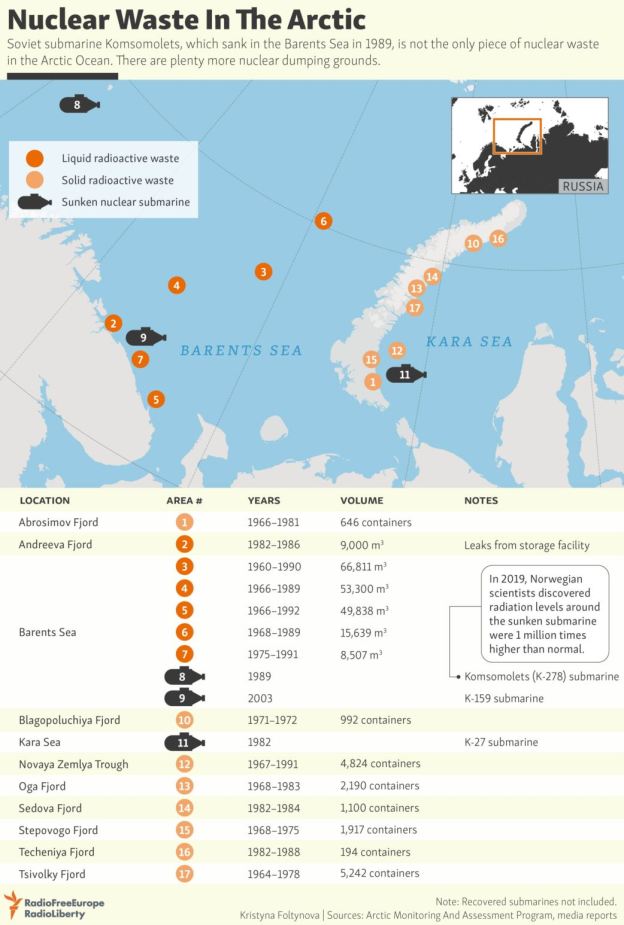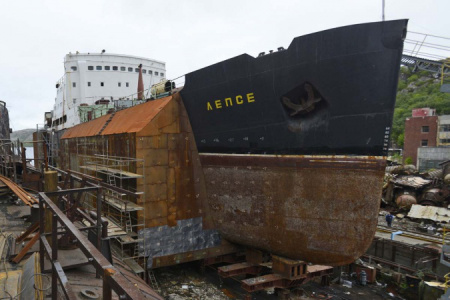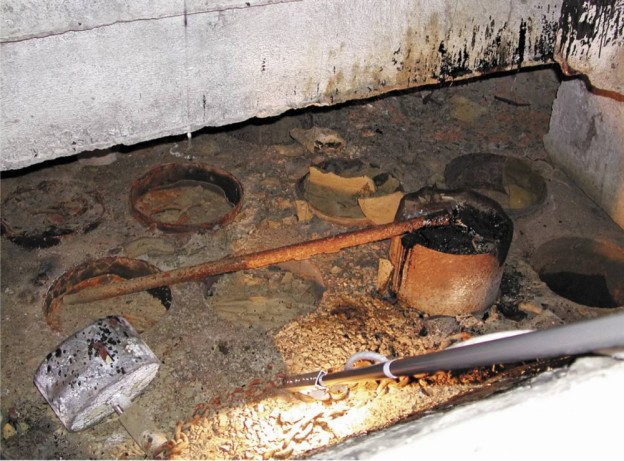A shipment of 14 containers with spent nuclear fuel from Andreeva Bay to Atomflot in Murmansk, Russia took place in December 2019 but it was paid by Norway. Unloading the 40-years old spent uranium fuel elements from the rundown storage tanks and repacking them to transport containers came with a price-tag of 5 million kroner (€500 000), while the shipment from Andreeva Bay to Murmansk will cost additional 2,5 million kroner (€250 000).
The December 2019 shipment was the fourth that year, but the first one paid by Norway. In Andreeva Bay, only 65 kilometers from the border to Norway, the Soviet navy packed away its lethal leftovers. Without too much thought for the costs of future clean up. In Norway, like in Russia, the demand for action came out of fears for possible radioactive leakages that could have potentially negative impact on the important fisheries in the Barents Sea. So far, isotopes contamination has only been discovered in the sediments in the near proximity off the shore and not further out in the bay.
Concerns of nuclear accidents and radioactive leakages are also why Norwegian authorities have granted hundres of millions kroner in aid to secure and clean up the site. After 25 years of cooperation to improve the situation in Andreeva Bay, the Norwegian experts argue that direct financing of practical work is the best way to gain an insight into how Russia deals with the clean up.
By the end of Soviet times, in the late 1980s, a total of 22,000 spent nuclear fuel elements, equal to about 100 reactor cores from submarines, had accumulated at the run-down storage facilities. In addition came thousands of cubic meters of solid radioactive waste stored outdoor in rusty containers and hundreds of cubic meters of liquid radioactive waste in tanks.
The two first decades of international cooperation concentrated on improving the infrastructure. Buildings were erected to cover three concrete tanks holding the spent nuclear fuel, both to keep out rain and snow, but also to make sure the removal- and repacking work could take place in safe conditions. The quay by the shore was rebuilt, a new special crane for lifting transport casks where put in place. Even a new on-purpose designed ship was built, paid by Italy.
In 2017, the first load of containers with spent nuclear fuel left Andreeva Bay towards Murmansk, from where it go by rail to Mayak, Russia’s reprocessing plant north of Chelyabinsk east of the Ural Mountains. So far in 2019, three shipments paid by Russia and one shipment paid by Norway have left Andreeva Bay. “25% of the original amount of spent nuclear fuel is now removed,” says Per-Einar Fiskebeck…
The remaining waste, tank 3A holds numerous rusty, partly destroyed steel pipes where concrete of poor quality was filled in the space between. Some of those fuel assemblies are stuck in the canisters, while some of the canisters are stuck in the cells. This is high level nuclear waste with radiation levels close to the uranium fuel comparable to the melted fuel rods inside the ill-fated Chernobyl reactor.
Another groundbreaking milestone in the clean up work took place earlier this fall when the retrieval of six abandoned, highly radioactive spent nuclear fuel assemblies from the bottom of Building No. 5 were successfully completed. Building No. 5 is a former pool storage, where several elements fell to the floor following a water-leakages in 1982. Traces of uranium and other radionuclides remained in the sludge at the bottom of the pool.
Thomas Nilsen,Norway helps pay for transporting old Russian navy nuclear waste, Barents Observer, Dec. 20, 2019
